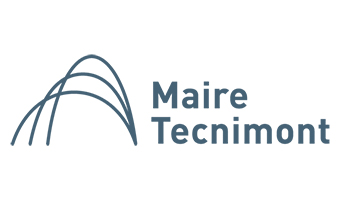
Tarita Green Energy plans to develop a 40,000 tons per year solar-powered renewable ammonia project to be used for fertilizer production for the local agricultural industry.

Tarita Green Energy plans to develop a 40,000 tons per year solar-powered renewable ammonia project to be used for fertilizer production for the local agricultural industry.
In our November episode of Project Features, we explored the MadoquaPower2X renewable ammonia project in Sines, southern Portugal. 300,000 tons per year of RFNBO-compliant ammonia will be produced for export to Rotterdam and Duisburg from 2028, focused on marine fuel and fertilizer markets in Europe.
Kenya aims to substitute 50% of current, ammonia-based fertilizer imports with locally-produced alternatives, based on the production of electrolytic hydrogen. New guidelines from Kenya’s Energy and Petroleum Regulatory Authority set carbon intensity thresholds for “green” hydrogen and ammonia, as well as the incentives on offer for project developers. The new launch follows commitments to promote local fertilizer production made by heads of state at the Africa Fertilizer and Soil Health Summit. We also explore two existing renewable projects in Kenya from Maire Tecnimont and Talus Renewables.
Launched in 2022, MAIRE Tecnimont will complete FEED for the MadoquaPower2X project in Sines, Portugal, as well as an EPC proposal for construction. The project will feature up to 1 GW of alkaline electrolysis capacity, feeding the production of 300,000 tons per year of ammonia. Terminal facilities will include large-scale storage, enabling the export of ammonia to northwest Europe.
Founding investors including EIT InnoEnergy, Maire Tecnimont, Siemens and Heineken have launched FertigHy - a new consortium aiming to build and operate large-scale fertiliser projects to supply the EU agricultural sector. The first project will be developed in Spain, producing more than one million metric tonnes per year of low-carbon, nitrogen-based fertilisers for the EU market.
Maire Tecnimont will develop a world-scale blue ammonia plant in the US after being awarded a contract by a “leading global chemicals producer”. Valued at approximately $230 million, the new plant features a 3,000 tonnes per day blue ammonia synloop. Completion is expected as early as 2025.
Paraguay's National Administration of Electricity (ANDE) signed a new MoU this week with MET Development and FerSam Uruguay to develop a 100% renewable energy-powered fertiliser plant in Alto Paraná. Hydroelectricity from the nearby Itaipu Dam will power green hydrogen production, which will then be utilised to produce ammonium nitrate fertilisers. ATOME Energy also announced plans for a 250 MW green hydrogen & ammonia production plant in the Itaipu Technology Park. Both project fit neatly into Paraguay's green hydrogen national strategy, with an installed electrolyser target of 600 MW set for 2030.
Maire Tecnimont and Greenfield Nitrogen have agreed to develop a green ammonia plant in Iowa, USA. Maire Tecnimont subsidiary NextChem will lead a feasibility study into a 240 tonne per day green ammonia plant based on Stamicarbon's Green Ammonia Technology.
This week: an ammonia-powered shipping network in northern Europe, Sluiskil update, green projects in Uruguay, green ammonia in Ireland: a new update!, Euronav to develop ammonia-powered tankers, ammonia part of Equinor's net-zero by 2050 strategy, H2Site to install first on-site crackers in France and updates from Australia.
Welcome to the Ammonia Wrap: a summary of all the latest announcements, news items and publications about ammonia energy. There's so much news this edition that we're bringing you two, special Wrap articles. Our first focuses on ammonia production - both existing and new build plants. This week: InterContinental Energy to build 25 GW of green ammonia production in Oman, Cummins and KBR to collaborate on integrated green ammonia solutions, New green ammonia pilot plant for Minnesota, Stamicarbon launches new technology for sustainable fertilizer production in Kenya, Haldor Topsoe and Shchekinoazot to explore ammonia plant decarbonisation in Russia, 1 million tonne blue ammonia per year in Norway and Trammo announces off-take MoU for 2GW AustriaEnergy plant in Chile.
Welcome to the Ammonia Wrap: a summary of all the latest announcements, news items and publications about ammonia energy. This week: updates from India, the PROMETEO project - continuous hydrogen production by SOEC, Viridis Bulk Carriers - a new zero-emissions shipping company, Korean Register AiP for ammonia bunkering vessel, two green hydrogen import MoUs for the Port of Rotterdam and Haldor Topsoe and Nel team up to offer green fuel solutions.
One of the most interesting unanswered questions surrounding green ammonia is this: what about urea? Last month, a major announcement by Stamicarbon ("the world market leader in design, licensing and development of urea plants") implies an answer: in the long-term context of climate change, urea as a fertilizer may simply need to be phased out. Stamicarbon announced its new Innovation Agenda at the company's "Future Day" event in Utrecht in April. Its Innovation Agenda covers three areas: speciality fertilizers, digitalization, and "Renewable production of fertilizer (using wind or solar energy to produce fertilizer)."